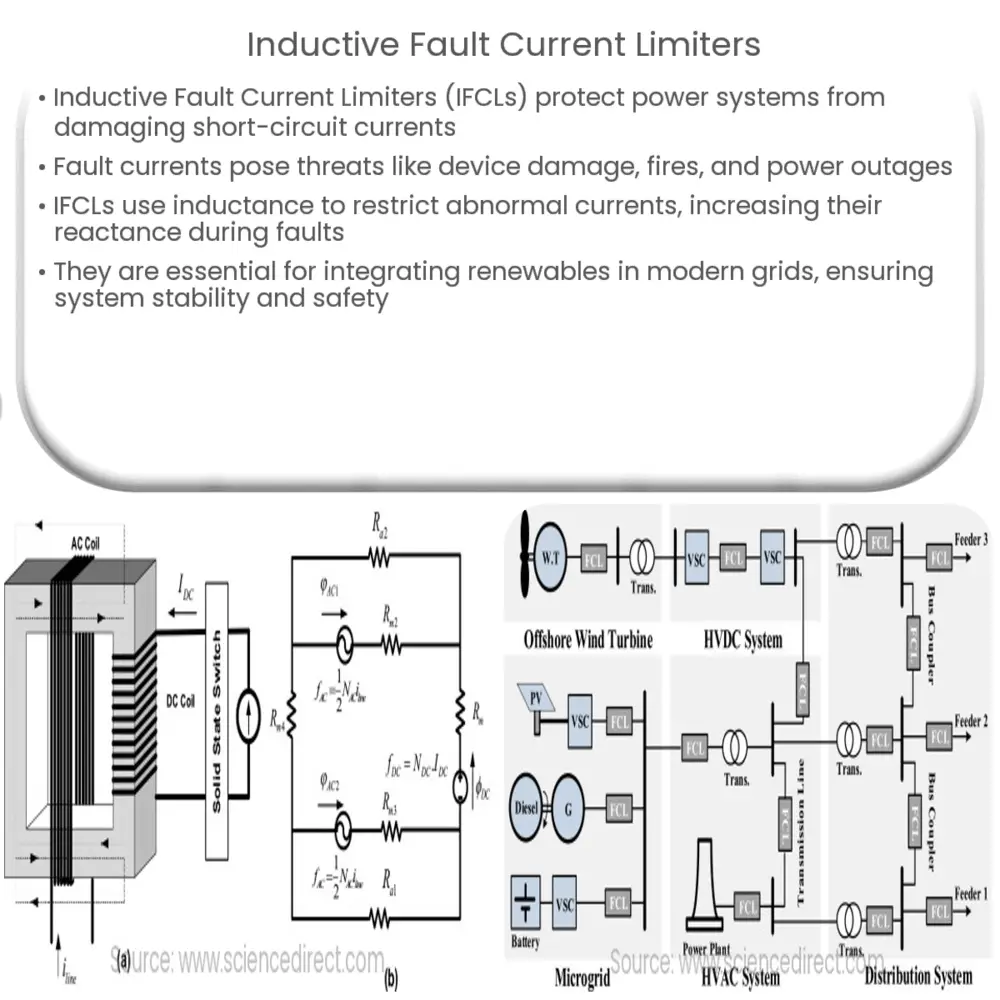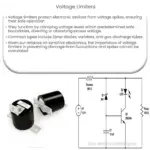Explore the crucial role of Inductive Fault Current Limiters (IFCLs) in protecting power systems from fault currents, their operation, benefits, and applications.

Introduction to Inductive Fault Current Limiters
With the ever-growing demands on our power grids and the inevitable presence of fault currents, the role of devices known as Inductive Fault Current Limiters (IFCLs) has become increasingly significant. IFCLs are designed to protect electrical power systems from potentially destructive short-circuit currents, a task that becomes progressively complex as networks evolve.
Understanding Fault Currents and their Impact
Fault currents occur when an unintentional electrical connection (a fault) is made between electrical conductors. These abnormal currents can pose considerable threats to the electrical power system, including damage to electrical devices, fire risks, and power outages. Therefore, the control of these fault currents is of prime importance.
- Device Damage: High magnitude fault currents can cause severe damage to electrical components within the system. The resulting overheating can degrade insulating materials, leading to the malfunction of devices and potential service interruptions.
- Fire Risk: Uncontrolled fault currents can lead to a substantial increase in temperature, which may cause a fire. This poses a serious risk to both equipment and personnel safety.
- Power Outages: Fault currents can lead to a power outage, significantly impacting the continuity of service and the reliability of the power supply. In extreme cases, they can cause cascading failures across the grid.
Inductive Fault Current Limiters (IFCLs)
IFCLs offer an effective solution to limit the potential harm caused by fault currents. They use the principle of inductance to restrict the flow of these abnormal currents. Essentially, an IFCL is a kind of inductor that is connected to the power system. The inductive reactance of an IFCL is low under normal operating conditions, but when a fault occurs, it increases significantly, thus limiting the magnitude of the fault current.
Types of Inductive Fault Current Limiters
IFCLs can be categorized into two main types: 1 Passive IFCLs and 2 Active IFCLs. Each type has distinct characteristics and operational principles.
- Passive IFCLs: These are designed to operate without any control system. They utilize the intrinsic properties of electrical materials to limit fault currents.
- Active IFCLs: These require a control system to function. When a fault is detected, the control system triggers the IFCL to increase its inductive reactance and limit the fault current.
In the next part of this article, we will delve into the working principles of IFCLs, their benefits, and challenges, and take a look at some applications in modern power systems.
Working Principles of IFCLs
The operation of an IFCL is quite straightforward. Under normal operation, the IFCL presents a low impedance to the electrical network, allowing current to flow freely. When a fault is detected, the inductive reactance of the IFCL is increased, limiting the fault current. The increase in inductance is usually achieved by a mechanical or electronic switching mechanism in active IFCLs, or by the inherent material properties in passive IFCLs.
Benefits of Using IFCLs
- Protection: IFCLs protect electrical systems from the damaging effects of fault currents. By limiting the current magnitude, they prevent overheating and potential damage to network components.
- Improved Network Stability: By preventing large fault currents, IFCLs contribute to maintaining network stability, reducing the chance of cascading faults and widespread power outages.
- Enhanced Safety: Limiting fault currents helps prevent fires and explosions, enhancing safety for both personnel and equipment.
Challenges and Considerations
While IFCLs are a valuable tool for fault current management, their implementation is not without challenges. These include costs, potential power losses, and the need for accurate fault detection and swift operation. Moreover, as the technology evolves, issues such as the integration of IFCLs into complex and smart grid systems are becoming increasingly significant.
Applications of IFCLs
IFCLs find application in various sectors, including power transmission and distribution networks, railways, and industrial power systems. In modern power grids, they are critical for integrating renewable energy sources and distributed generation systems, where the risk of fault currents is increased due to the complexity and variability of power flow.
Conclusion
As our power systems grow and become more complex, the management of fault currents is an essential aspect of maintaining system stability and safety. Inductive Fault Current Limiters offer a potent solution to this challenge. Through their ability to limit fault currents, they protect the system components from damage, enhance network stability, and improve safety. While there are challenges to be addressed in their implementation, the benefits of IFCLs make them an indispensable tool in the evolving landscape of power systems. With continued research and innovation, we can expect to see more advanced and efficient IFCLs in the future, paving the way for safer, more reliable power systems.



